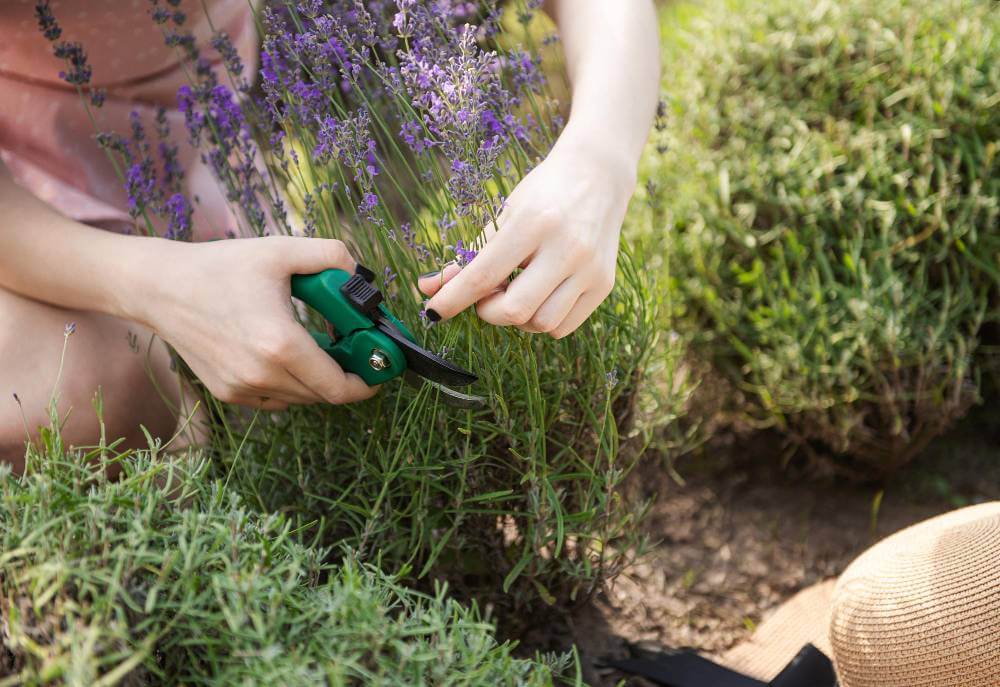Welcome to my herb garden adventures! Today, we embark on a journey into the vibrant world of savory – an herb renowned for its peppery allure and culinary versatility. Savory is a member of the mint family, prized for its robust flavor that adds depth to a wide array of dishes. Start your savory journey today and savor the joys of homegrown herbs!
Unveiling the Benefits and Culinary Marvels of Savory
Savory isn’t just a flavor enhancer; it’s a powerhouse of health benefits too. Rich in antioxidants, savory aids digestion, supports respiratory health and boosts immune function. Both summer savory (Satureja hortensis) and winter savory (Satureja montana) impart a distinct peppery flavor that elevates meats, stews, soups, and sauces to new heights.
Exploring the Diverse Varieties of Savory
In the realm of savory, diversity thrives. Summer savory flourishes in warmer climates and delights with its fresh, delicate leaves perfect for immediate use in cooking.
Winter savory withstands colder temperatures with its robust, woody stems and maintains its flavorful essence year-round. Its leaves are more substantial and have a stronger taste, enduring through the winter months to provide a steady supply of savory goodness.
Decoding the Lifecycle: Annual or Perennial Charms?
Understanding the lifecycle of savory informs strategic garden planning. Summer savory, an annual herb, completes its cycle within a single growing season, offering continuous harvests from spring through fall. Winter Savory, a perennial champion, establishes deep roots in its first year and requires minimal maintenance once established.
Planting Savory: Optimal Seasons and Conditions
For summer savory, sow seeds directly in well-drained soil after the threat of frost has passed in early spring. Ensure seeds are spaced 8-12 inches apart to allow for proper airflow and growth.
Winter savory benefits from a slightly later planting, enjoying the warmth of late spring or early summer to establish deep roots before winter sets in. Provide consistent moisture, especially during dry spells, to promote healthy growth and flavorful leaves.
Sunlit Delights: Savory’s Preference for Sunshine
Savory thrives in sunny locales, soaking up a minimum of 6-8 hours of direct sunlight daily for robust growth and maximum flavor development. While it can tolerate partial shade, planting savory in a sun-drenched spot ensures vibrant, aromatic leaves that enhance every dish with their peppery punch. Rotate plantings annually to prevent soil depletion and ensure continuous, healthy growth.
Nurturing Savory through Winter: Essential Care Tips
As colder months approach, safeguard perennial winter savory by mulching around its base to insulate roots from frost. Apply a layer of organic mulch, such as straw or shredded leaves, to conserve moisture and regulate soil temperature.
Light pruning in late fall promotes compact growth and prevents disease, ensuring robust plants come spring. In regions with harsh winters, consider indoor cultivation using containers or raised beds to enjoy savory’s flavors year-round.
From Seeds to Seedlings: Cultivating Savory from Scratch
Starting savory from seeds offers a rewarding journey from germination to harvest. Begin seeds indoors in early spring, 6-8 weeks before the last frost date, using seed trays filled with seed-starting mix. Maintain consistent moisture and warmth, around 70-75°F (21-24°C), to encourage strong seedling growth.
Transplant seedlings outdoors once the soil warms and all danger of frost has passed, spacing plants 8-12 inches apart in rows or clusters. Alternatively, nursery-grown seedlings provide a convenient head start for novice herb gardeners eager to enjoy savory’s benefits sooner.
Propagating Savory: Growing from Cuttings
Expand your savory collection effortlessly through propagation from cuttings. Select 4–6-inch stems from healthy plants, ideally in early summer when growth is vigorous. Remove lower leaves and dip cut ends in rooting hormone powder to promote root development. Plant cuttings in well-drained soil or a mix of perlite and peat moss, keeping them consistently moist until roots form. Once rooted, transplant cuttings into pots or garden beds, spacing them 8-12 inches apart to allow for future growth. With proper care and attention, propagated savory plants thrive and reward you with a bountiful harvest of this flavorful herb.
Growing Savory: Indoors or Outdoors – Harnessing Versatility
Whether you’re limited on garden space or extending the growing season, savory adapts well to both indoor and outdoor environments. Indoors, provide bright, indirect sunlight or use grow lights to mimic natural conditions. Outdoor cultivation thrives in well-drained soil with full sun exposure, ensuring robust growth and flavorful leaves for culinary use.
Nurturing Savory: Best Soil for Thriving Growth
Savory thrives in well-drained and sandy loam soil. Incorporate organic matter like compost or aged manure into the soil before planting to enhance nutrient retention and promote healthy root development. Avoid heavy clay soils, which can lead to waterlogging and root rot, compromising savory’s growth and flavor.
Growing Savory: Instructions for Pot Cultivation
Growing savory in pots offers flexibility and convenience, ideal for urban gardens or small spaces. Choose a pot with good drainage and fill it with a well-draining potting mix. Place in a sunny location or use grow lights indoors. Water regularly to keep the soil moist but not waterlogged and fertilize lightly during the growing season to support savory’s nutrient needs.
Hydroponic Cultivation of Savory: Innovative Growing Techniques
Harness the benefits of hydroponics to cultivate savory without soil, using nutrient-rich water solutions instead. Choose a hydroponic system suitable for herbs, ensuring ample oxygenation and nutrient circulation. Monitor pH levels and nutrient concentrations regularly to optimize savory’s growth and flavor production in this soil-free environment.
Watering Savory: Essential Hydration Tips
Maintain consistent moisture levels for savory, watering deeply when the top inch of soil feels dry. Avoid overwatering, which can lead to root rot, and ensure adequate drainage to prevent waterlogged conditions. During hot, dry periods, increase watering frequency to support savory’s growth and maintain flavorful leaves.
Companion Planting with Savory: Enhancing Garden Harmony
Savory’s aromatic foliage isn’t just delightful to the senses – it also plays a crucial role in garden ecology through companion planting. When strategically placed, savory acts as a natural pest deterrent and attracts beneficial insects like bees and butterflies, enhancing overall garden biodiversity. Pairing savory with herbs such as rosemary, thyme, and sage creates a mutually beneficial environment where each plant supports the other’s growth and health.
Additionally, planting savory alongside flowering plants like marigolds and nasturtiums enhances pollination, ensuring abundant harvests of herbs and vegetables. This harmonious approach not only improves garden productivity but also fosters a sustainable gardening practice that benefits both plants and pollinators alike.
Planting Foes: Cautions and Compatibility
While savory is a beneficial companion plant in many respects, it’s essential to exercise caution when selecting its neighbors in the garden. Savory, particularly winter savory, can exude allelopathic compounds that inhibit the growth of certain plants, especially beans and peas. These allelochemicals can affect the germination, growth, and overall health of neighboring plants by altering soil pH or inhibiting specific biochemical processes crucial for their development.
Additionally, savory’s vigorous growth and dense foliage can shade out smaller or more delicate plants nearby, reducing their access to sunlight and stunting their growth. It’s advisable to avoid planting savory near cucumbers, or fennel to prevent potential compatibility issues and ensure optimal growth for all plants in your garden.
The Attraction Towards Pollinators: Savory’s Role in Garden Ecology
Savory’s small, fragrant flowers attract beneficial pollinators like bees and butterflies, enhancing garden biodiversity and supporting ecosystem health. Encourage pollinator activity by planting savory near other flowering herbs and vegetables, creating a thriving habitat that boosts garden productivity and natural pest control.
Pruning Savory: Maintenance for Optimal Growth
Pruning summer savory is essential to maintain its bushy, compact growth and enhance flavor concentration. Throughout the growing season, regularly trim back spent flowers and leggy stems to encourage new growth and prolong the harvest. This practice not only stimulates branching but also prevents the plant from becoming overly woody, ensuring a steady supply of tender leaves for culinary use.
Pruning winter savory plays a crucial role in preparing the plant for seasonal renewal and ensuring long-term vitality. In late winter or early spring, before new growth emerges, prune back older, woody stems and any damaged or diseased branches. This rejuvenation pruning helps maintain winter savory’s compact form, promotes air circulation, and prevents the onset of fungal diseases during the growing season.
Use clean, sharp pruning shears to make precise cuts just above a set of healthy leaves or nodes.
Pest Treatment: Safeguarding Savory from Garden Pests
The peppery scent of savory repels pests like aphids and spider mites, reducing the need for chemical pesticides and promoting a healthier garden ecosystem. Regularly inspect savory plants for signs of pest infestation, such as curled or discolored leaves, sticky residue, or visible insects. Promptly remove heavily infested leaves or plants to prevent pest spread and minimize damage to savory crops.
Introducing beneficial insects like ladybugs or lacewings can help naturally control aphid populations by preying on them. For larger infestations, consider using organic pest control methods such as neem oil spray or insecticidal soap, which effectively deter pests without harming beneficial insects or compromising plant health.
Recap
As we wrap up our savory adventure, it’s clear that growing this peppery herb isn’t just about adding zest to your dishes – it’s about cultivating a thriving garden full of flavor and charm.
From exploring its culinary magic to mastering planting techniques and pest management, savory has proven to be a delightful addition to any herb garden. So, I encourage you to sow the seeds of savory and watch your garden bloom with savory goodness.
Stay tuned for more herb-filled escapades on my blog, where each post promises to bring you closer to the joys of gardening and culinary creativity! Happy growing!







